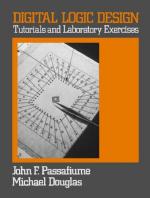|
This section contains 552 words (approx. 2 pages at 300 words per page) |

|
Digital logic is a precise set of mathematical rules for representing the relationships and interactions of symbols stored in a digital computer. Binary logic, Boolean logic, and digital logic are often considered interchangeable terms, as nearly all digital computers perform logical and arithmetic operations on information cast in binary (i.e., two-valued) form.
In 1847 the English mathematician George Boole created a system of algebra that represented logical relationships and operations in which all values are reduced to either TRUE or FALSE. In the 1930s and 1940s British mathematician Alan Turing and American applied mathematician Claude Shannon, who together laid much of the theoretical foundation for the use of binary logic in digital computers, recognized that binary logic was well suited to digital computers. By the late 1930s several digital computers were using Boolean algebra, thus implementing earlier theoretical ideas. Some of these computers were the Z...
|
This section contains 552 words (approx. 2 pages at 300 words per page) |

|


